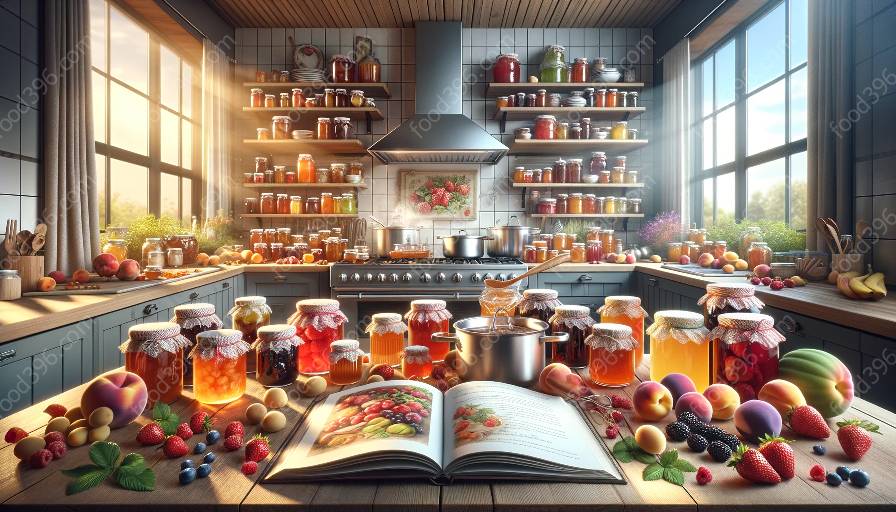When it comes to jam and jelly making, preserving the delicious flavors and textures is crucial. Understanding the shelf life and storage recommendations for jams and jellies ensures that you can enjoy your homemade creations for longer periods. This topic cluster will explore the best practices for preserving jams and jellies, including food preservation and processing techniques.
Jam and Jelly Making
Before delving into the shelf life and storage recommendations, it's essential to have a good grasp of jam and jelly making. This process involves boiling fruits and sugar to create a delicious spread with a thick consistency.
Ingredients: The primary ingredients for jam and jelly making include ripe fruits, sugar, and pectin (a natural gelling agent found in fruits or commercially available).
Process: The process involves cooking the fruits and sugar over heat to create a thick, spreadable consistency. Pectin may be added to aid in the gelling process.
Food Preservation and Processing
Food preservation and processing techniques play a significant role in determining the shelf life and quality of jams and jellies. Proper preservation methods help retain the natural flavors, colors, and textures of the fruits used in these spreads. Some popular methods of food preservation include canning, freezing, and refrigeration.
Shelf Life of Jams and Jellies
The shelf life of jams and jellies varies based on factors such as ingredients, storage conditions, and preservation techniques. Typically, properly preserved jams and jellies can have a shelf life of about 1 to 2 years.
Factors Affecting Shelf Life: Factors such as sugar content, acidity, and proper sealing of containers impact the shelf life of jams and jellies. High sugar content helps inhibit bacterial growth, while acidity also contributes to preservation.
Storage Recommendations
Proper storage is essential for maintaining the quality of jams and jellies. Here are some storage recommendations to extend the shelf life of homemade jams and jellies:
- Container: Store jams and jellies in clean, airtight containers to prevent air and moisture from entering, which can lead to spoilage.
- Location: Store jars in a cool, dark place away from direct sunlight and temperature fluctuations. Avoid storing near heat sources.
- Refrigeration: Once opened, refrigerate jams and jellies to maintain freshness. They can typically last for several months in the refrigerator.
- Freezing: Jams and jellies can also be frozen for long-term storage. Ensure proper packaging to prevent freezer burn.
Conclusion
Understanding the shelf life and storage recommendations for jams and jellies is essential for anyone interested in jam and jelly making and food preservation. By following proper techniques and storage practices, you can enjoy your homemade jams and jellies for extended periods without compromising on the flavors and quality.

